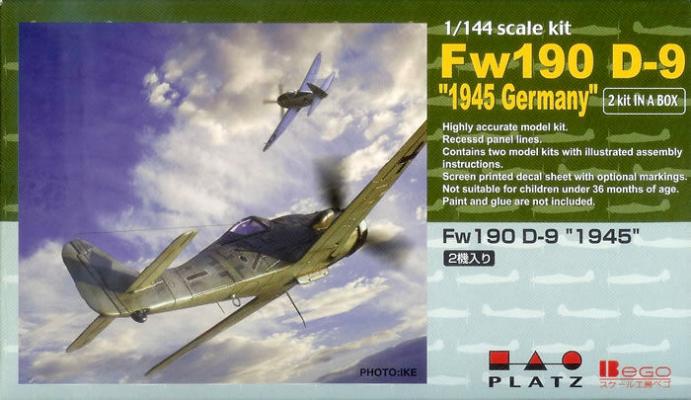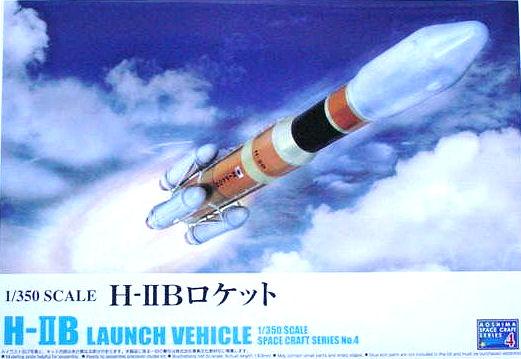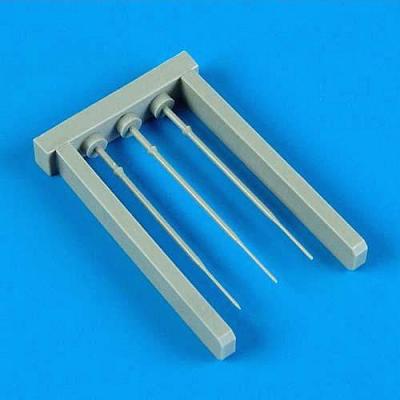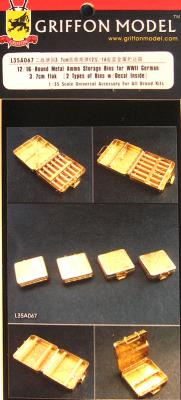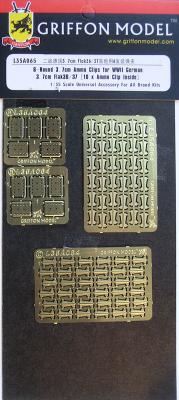Platz kits are noted for their delicacy and true-to-scale thickness of parts, and their Focke-Wulf 190D-9 is no exception. Engraved surface detail and excellent fit make the build easy with little need for putty; the gear legs are scale thickness and even the pitot tube is molded pretty much to scale. The offering is typical Platz – two complete kits in the box, with decals and optional parts supplied for three different Reich birds.
The interior is basic, with a seat and an otherwise bare cockpit space.
Two canopies are provided, the low-profile one and the blown type, along with the appropriate interior headrest structure for each.











